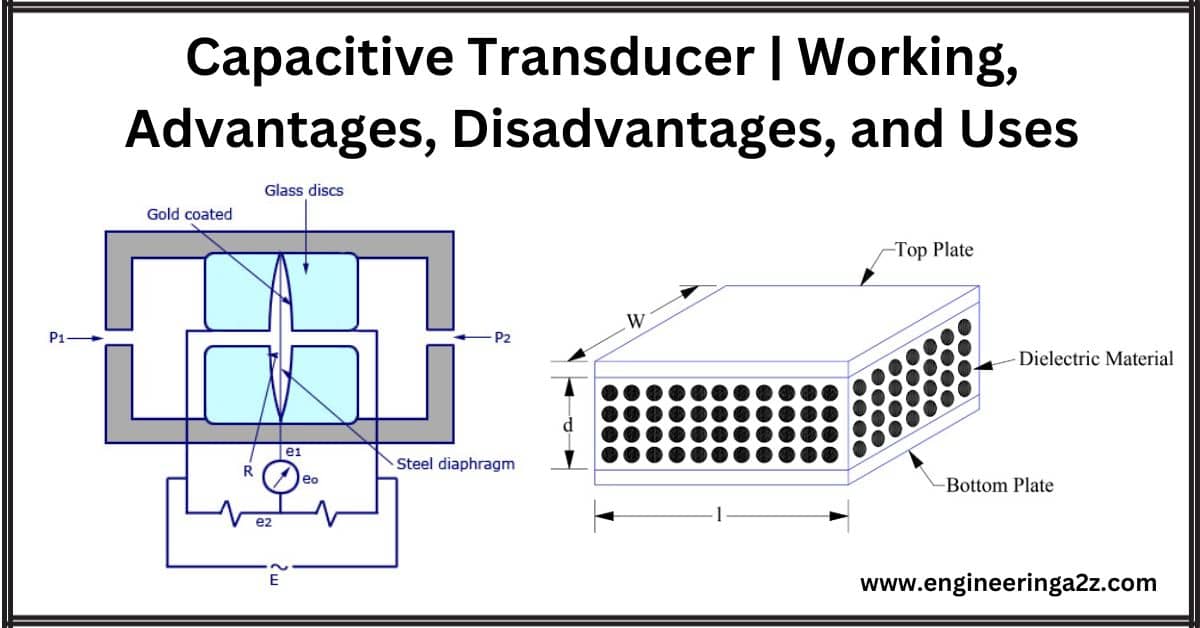
Table of Contents
Introduction
A capacitive transducer is a device used to measure displacement and pressure. It relies on changes in capacitance, which is a measure of how much electric charge a device can store. In a capacitive transducer, you have two metal plates with a gap between them. This gap can change in size due to different factors like the plates overlapping, the distance between them, or the material between them.
These changes in the gap affect the capacitance, and that’s how the transducer works. It converts mechanical movements (like things moving closer or farther apart) into an electrical signal. Capacitive transducers can measure both static (unchanging) and dynamic (changing) conditions. You can even measure displacement directly by connecting a device to the moving plate of the capacitor. They work both when things touch and when they don’t touch the plates.
Capacitive Transducer
The diagram shows the inner workings of a capacitive transducer. Unlike a regular capacitor, which always has a fixed capacitance (like a fixed-size bucket), a capacitive transducer can change its capacitance. It’s like having an adjustable bucket that can hold more or less electric charge depending on the situation.
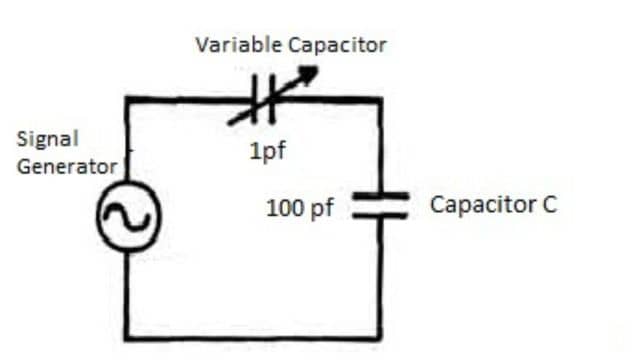
Working Principle of Capacitive Transducer
A capacitive transducer works by changing its capacitance, which measures its ability to store electrical charge. It has two metal plates with a gap between them, filled with something like air. When the plates move, the gap changes, and this affects the capacitance.
The main difference from a regular capacitor is that the plates can move in a capacitive transducer.
The capacitance depends on four things: the gap between the plates, the size of the plates, the material between them, and the characteristics of that material.
You can change capacitance in three ways:
- By altering the material’s properties between the plates.
- Adjusting the size of the plates.
- Changing the gap between the plates (this is the most common method). When the plates move, the gap changes, and this directly changes the capacitance.
1. By altering the material’s properties between the plates – You can change the capacitance by altering the space between the two plates. When you move the plates closer together, the capacitance increases. If you move them farther apart, the capacitance decreases. This concept is used in transducers where one plate remains still, and the other plate moves to measure displacement.
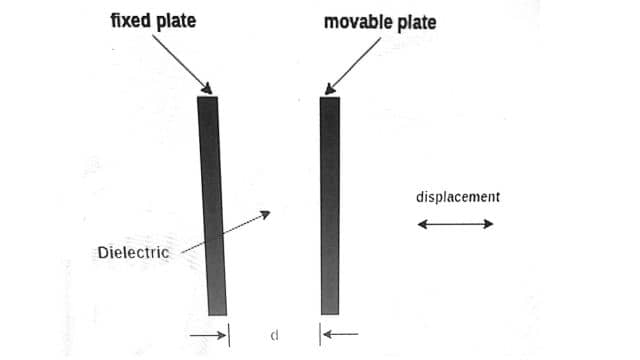
By changing the distance between two plates, you can adjust the capacitance of the transducer. This change in capacitance can be precisely measured and calibrated to represent the thing you want to measure (measurand). These transducers are useful for measuring very tiny displacements. The relationship between distance and capacitance is represented by a curve, as shown in the figure.
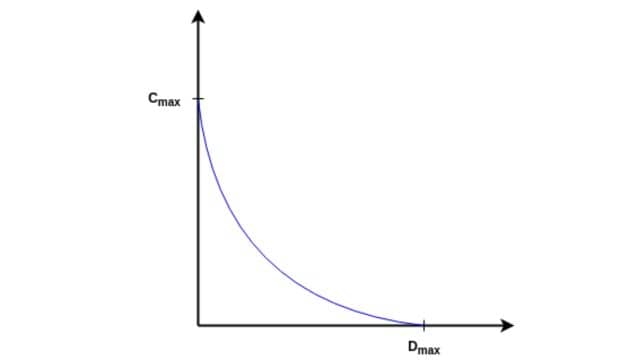
2. Adjusting the size of the plates – You can also change capacitance by altering the permittivity (the ability to store electrical charge) of the material between the plates. Capacitance and permittivity are directly related, so if you change the material’s properties, you change the capacitance. In a setup, you fill the space between two fixed plates with a material that can be moved. When you move this material, its properties change, affecting the capacitance of the transducer.
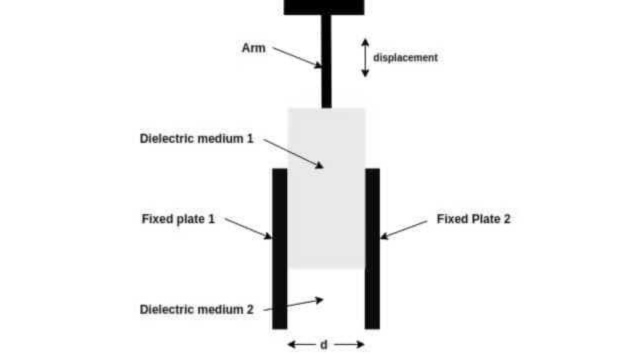
3. Changing the gap between the plates – You can also adjust capacitance by changing how much the plates overlap. In the setup, one plate stays still, and the other can move. When the moving plate shifts, the area where the plates overlap changes, which in turn changes the capacitance.
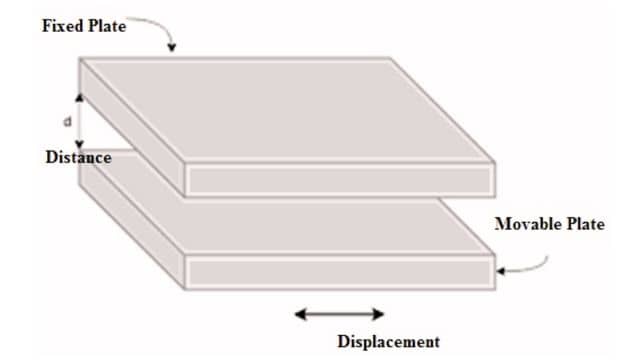
The more the plates overlap, the higher the capacitance. These transducers are suitable for measuring larger displacements. The relationship between distance and capacitance is depicted in the curve shown in the figure.
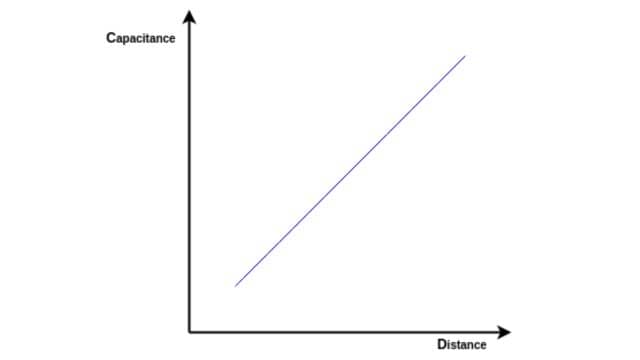
Advantages of Capacitive Transducer
- Capacitive transducers need an external force to work, which makes them suitable for small systems.
- They are highly sensitive, meaning they can detect even tiny changes.
- They provide a good response at different frequencies, which is helpful for studying dynamic situations.
- These transducers have a high input impedance, meaning they don’t interfere much with the system they’re measuring.
- They use very little power for operation, which is efficient.
Disadvantages of Capacitive Transducer
- The metal parts of the transducer need to be insulated to prevent unwanted electrical contact.
- Grounding the transducer’s frame helps reduce the impact of stray magnetic fields on measurements.
- Occasionally, the transducer may behave nonlinearly due to edge effects. To address this, a guard ring is used.
- Errors can occur due to the cable connecting to the transducer.
Uses of Capacitive Transducer
- Capacitive transducers are versatile and can measure both straight-line and rotational movements. They are incredibly sensitive and can detect very small changes in distance.
- They are employed to measure force and pressure. These quantities are first transformed into displacement, which, in turn, alters the capacitance of the transducer.
- In certain cases, capacitive transducers act as pressure sensors by detecting changes in the transducer’s dielectric constant under pressure.
- They are also used to gauge humidity in gases.
- For various measurements like volume, density, and weight, mechanical modifications are made to the transducer.
Frequently Asked Questions (FAQs)
What is a Capacitance Transducer?
A capacitance transducer is a sensor that measures physical quantities like displacement or pressure by detecting changes in the capacitance of two parallel plates separated by a gap or dielectric material.
What are the applications of capacitance transducers?
Capacitance transducers are used in displacement measurement, pressure and force sensors, humidity sensing, level measurement, proximity sensors, non-contact position sensing, and measurements of volume, density, and weight.
What is the principle of a capacitive transducer?
Capacitive transducers operate based on changes in capacitance, the ability to store electric charge. Alterations in the distance between two plates or properties of the dielectric material between them lead to capacitance changes, enabling measurements of physical quantities.
What is the most common use of capacitive sensors?
The most common use of capacitive sensors is in touchscreens for smartphones, tablets, and other touch-sensitive devices, as they detect the presence and location of touch.
Read Also:
- Block Diagram Reduction | Control System
- Circuit Theorem | Thevenin’s Theorem
- Function Generator – Engineeringa2z
- Basic Electrical Engineering | Engineeringa2z





Leave a Reply